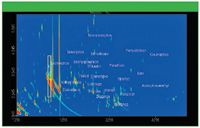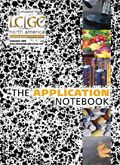Analysis of Pesticides in Smokeless Tobacco by Comprehensive Two-Dimensional Gas Chromatography-Time of Flight Mass Spectrometry (GC×C-TOFMS)
Smokeless tobacco can contain thousands of analytes, making it an extremely difficult matrix for identification of pesticide residues.
Smokeless tobacco can contain thousands of analytes, making it an extremely difficult matrix for identification of pesticide residues. Many current methodologies incorporate the use of complex, time consuming sample cleanup techniques to eliminate much of the matrix interference prior to analysis by GC–MS.
This application highlights how the increased peak capacity of comprehensive two-dimensional gas chromatography can minimize the need for extensive sample cleanup methods. A GC×GC-TOFMS analysis of a commercially available smokeless tobacco product is shown. A QuEChERS sample extraction was used without dispersive solid phase cleanup.

Samples
Calibration curves were generated for 87 pesticides at concentrations from 0.5 to 2000 pg/μL. The correlation coefficients averaged 0.993 for the 87 pesticides. A QuEChERS extract of smokeless tobacco was spiked with these pesticides at 100 pg/μL and analyzed by GC×GC-TOFMS.
Results and Conclusions
All pesticides were detected and identified in the smokeless tobacco extract. Interferences such as wintergreen oil, which would co-elute with pesticide residues in a one-dimensional GC–MS analysis, were eliminated by the increased resolution of GC×GC-TOFMS.

Figure 1: Total ion contour plot showing GCÃC-TOFMS analysis of spiked smokeless tobacco extract.
Figure 1 displays a total ion contour plot for the spiked tobacco extract showing a partial group of the pesticides detected. The region highlighted by the orange rectangle exhibits the y-axis separation of Dichlorvos from an intense peak for wintergreen oil. Figure 2 illustrates that quantitation using (m/z 109) would still result in interference from the wintergreen oil in a one-dimensional separation as both analytes contain this mass fragment. In this example, the GC×GC separation is critical to removing the potential for quantitation bias.

Figure 2: Expanded view of the highlighted region from Figure 1 now displaying only (m/z 109).
In addition to the increased chromatographic resolution, the use of a Time of Flight Mass Spectrometer provides the ability to acquire full mass range spectra without sacrificing sensitivity. This is beneficial for detecting not only target pesticides, but also new and emerging contaminants.

LECO Corporation
3000 Lakeview Avenue, St. Joseph, MI 49085
tel. (269)985-5496; fax (269)982-8977
Website: www.leco.com

Analysis of Pesticides in Foods Using GC–MS/MS: An Interview with José Fernando Huertas-Pérez
December 16th 2024In this LCGC International interview with José Fernando Huertas-Pérez who is a specialist in chemical contaminants analytics and mitigation at the Nestlé Institute for Food Safety and Analytical Sciences at Nestlé Research in Switzerland, In this interview we discuss his recent research work published in Food Chemistry on the subject of a method for quantifying multi-residue pesticides in food matrices using gas chromatography–tandem mass spectrometry (GC–MS/MS) (1).

.png&w=3840&q=75)

.png&w=3840&q=75)



.png&w=3840&q=75)



.png&w=3840&q=75)
















